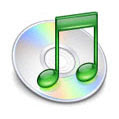 We've been battling boredom for a year now.
We've been battling boredom for a year now.And in that year we've gotten some great feedback from our readers. We've been told that "this is a great e-zine! Very simple, great writing. Good job!!" and that it "is first class. Absolutely excellent."
We certainly like to think so. Thanks!
We even had a reader (who obviously didn't have enough to do) run our articles from the 2002.10 issue through a grade level proficiency system (something we try to avoid at all costs). The results? See for yourself:
CRITIQUE. A New Rosetta Stone 10.8 grade level
OPINION. Democracy in Action 9.3 grade level
REVIEW. Crack TV 7.9 grade level
In all fairness, our critic ran his own email through the system: 5.9 grade level.
And we've had some feedback from the subjects of our articles as well. IDEO responded to us about their book review and Virginia Velleca of the Defoor Centre contacted us in regards to our 2002.07 review: "This site is really beautiful and your review of us most complimentary and appreciated ... I'd like to mention it and include it when we are talking to other people about what we are trying to do here. Thank you very much for your kind words and exceptional images."
Readership grew steadily though the first year of Fight.Boredom as people found the site (most of them, through Google) and added themselves to our monthly announcement mailing list. To date, our most viewed issue was 2003.02 with almost 9,500 hits and our most linked to article, "A Brand Battle Smack Down".
Some of our most read articles were those involving video media ("The Perfect Fusion of Audio and Video" and "Volkswagen & Mr. Blue Sky") while our most lauded articles dealt with real world issues and the critical design issues surrounding them ("What The..." and "Visual Communication of Grief"). We also had a number of very confused readers respond to our April Fool's Day homepage...
And, last but not least, a few new Cloudjammer clients have found their way to us through Fight.Boredom or juxtaposed the e-zine against our portfolio. We're glad they liked what they saw.
But this first year of Fight.Boredom hasn't been without its problems. Despite best efforts, monthly publication dates have varied wildly across the calendar (for instance, the August and September 2002 issues were published only a week apart). 2003 brought a commitment to publication in the first week of each month...this issue exempted, apparently.
And we've had a few articles that drew less favorable comments. While everyone we've heard feedback from agreed with our opinion in the article "Two (More) Reasons to Hate Verisign", several readers have asked us about personal anger management and legal representation in regards to the Internet security giant.
But it has been a great year...and a lot of fun for both the writers and the readers (if their feedback is to be believed). Hopefully another year of the battle against boredom will be just as successful and even more widely read.
'Till then...keep fighting! fb


